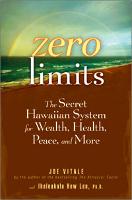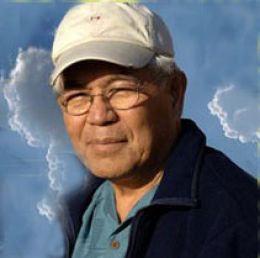Ho'Oponopono
(Ho - O - Pono-Pono) is an ancient Polynesian form of Forgiveness and Reconciliation now being accepted by the U.S. Judicial and Court system as a way of using COMPASSION to move through disharmony into harmony. Every time we have completed this meditation, "miracles" seem to take place! By seeking Reconciliation we naturally come into Forgiveness as we discover we really are --- All One!
Author Max Freedom Long, who lived in Hawaiʻi from 1917 to about 1926, documented traditional hoʻoponopono as used by Hawaiian families in his 1936 book, "The Secret Science Behind Miracles." Although the word hoʻoponopono was not used, early Hawaiian historians documented a belief that illness was caused by breaking kapu, or spiritual laws, and that the illness could not be cured until the sufferer atoned for this transgression, often with the assistance of a praying priest (kahuna pule) or healing priest (kahuna lapaʻau). Forgiveness was sought from the gods or from the person with whom there was a dispute.
HoʻOponopono corrects, restores and maintains good relationships among family members and with their gods or God by getting to the causes and sources of trouble.
HoʻOponopono" is defined in the Hawaiian Dictionary as "mental cleansing: family conferences in which relationships were set right through prayer, discussion, confession, repentance, and mutual restitution and forgiveness."
PONO means "rightness" ~ PonoPono means Authentic Rightness (like a chair is meant to be sat in) Ho'O means ... to make. Ho'Oponopono therefor means TO MAKE AUTHENTICALLY RIGHT!
 In 2007 Dr. Ihaleakala Hew Len, co-authored a book with Joe Vitale called Zero Limits referring to Morrnah Simeona, a healing priest, who adapted the traditional hoʻoponopono of family mutual forgiveness to the social realities of the modern day. For this she extended it both to a general problem solving process outside the family and to a psycho-spiritual self-help rather than group process.
In 2007 Dr. Ihaleakala Hew Len, co-authored a book with Joe Vitale called Zero Limits referring to Morrnah Simeona, a healing priest, who adapted the traditional hoʻoponopono of family mutual forgiveness to the social realities of the modern day. For this she extended it both to a general problem solving process outside the family and to a psycho-spiritual self-help rather than group process.
Simeona's version is influenced by her education and philosophical studies about India, China and Edgar Cayce. Like Hawaiian tradition she emphasizes prayer, confession, repentance, and mutual restitution and forgiveness. Unlike Hawaiian tradition, she describes problems only as the effects of negative Karma, saying that "you have to experience by yourself what you have done to others."
Dr. Len makes no claim to be a kahuna. In contrast to Simeona's teachings, the book brings the new idea that the main objective of hoʻoponopono is getting to "the state of Zero, where we would have zero limits. No memories. No identity." Through this,
healing takes place in mind, body, spirit with self and others. To reach this state, which Len called 'Self-I-Dentity', one has to repeat constantly the mantra:
I'm sorry.
Please forgive me.
Thank you.
I love you.
It is based on Len's idea of 100% responsibility, taking responsibility for everyone's actions, not only for one's own. If one would take complete responsibility for one's life, then everything one sees, hears, tastes, touches, or in any way experiences would be one's responsibility because it is in one's life.
* Dr. Hew Len, the Teacher of Ho'oponopono
More than thirty years ago, in Hawaii, at the Hawaii State Hospital, there was a special ward, a clinic for the mentally ill criminals. People who had committed extremely serious crimes were assignated there either because they had a very deep mental disorder or because they needed to be checked to see if they were sane enough to stand trial. They had committed murder, rape, kidnapping or other such crimes. According to a nurse that worked there in those years, the place was so bleak that not even the paint could stick to the walls, everything was decaying, terrifying, repulsive. No day would pass without a patient-inmate attacking another inmate or a member of the staff.
The people working there were so frightened that they would walk close to the walls if they saw an inmate coming their way in a corridor, even though they were all shackled, all the time –but more than once this wouldn’t stop an aggression. The inmates would never be brought outside to get fresh air because of their relentlessly threatening attitude. The scarcity of staff was a chronic occurrence. Nurses, wardens, employees would prefer to be on sick-leave most of the time in order not to confront such a depressive and dangerous environment.
One day, a newly appointed clinical psychologist, a Dr. Hew Len, arrived at the ward. The nurses rolled their eyes, bracing themselves for one more guy that was going to bug them with new theories and proposals to fix the horrid situation, who would walk away as soon as things became unpleasant, around a month later, usually. However, this new doctor wouldn’t do anything like that. Actually he didn’t seem to be doing anything in particular, except just coming in and being always cheerful and smiling, in a very natural, relaxed way. He wasn’t even particularly early in arriving every morning. From time to time he would ask for the files of the inmates.
He never tried to see them personally, though. Apparently he just sat in an office, looked at their files, and to members of the staff who showed an interest he would tell them about a weird thing called Ho’Oponopono. Little by little things started to change in the hospital. One day somebody would try again to paint those walls and they actually stayed painted, making the environment more palatable. The gardens started being taken care of, some tennis courts were repaired and some prisoners that up until then would never be allowed to go outside started playing tennis with the staff. Other prisoners would be allowed not to be shackled any more, or would receive less heavy pharmacological drugs. More and more obtained permission to go outside unshackled, without causing trouble to the hospital’s employees.
In the end, the atmosphere changed so much that the staff was not on sick leave any more. Actually, more people than needed wished now to work there. Prisoners started gradually to be released. Dr. Hew Len worked there close to four years. In the end, there remained only a couple of inmates that were relocated somewhere else and the clinic for the mentally insane criminals had to close.

Dr. Hew Len
*The part about Dr. Hew Len was taken from:
http://rosariomontenegro.hubpages.com/hub/How-Dr-Hew-Len-healed-a-ward-of-mentally-ill-criminals-with-Hooponopono
with all respect and gratitude! THANK YOU! I LOVE YOU!